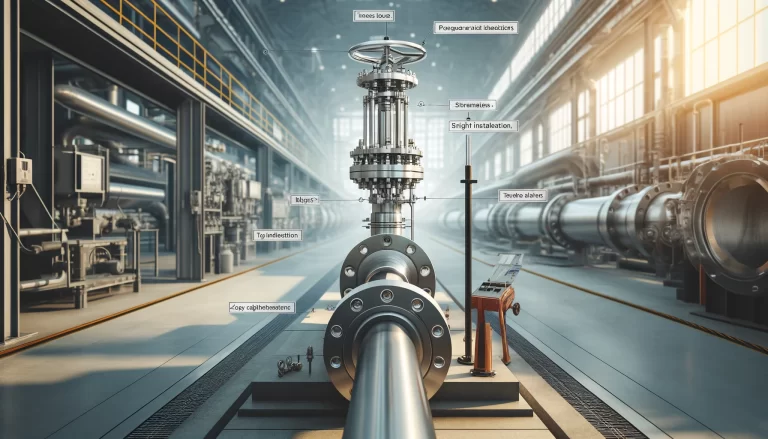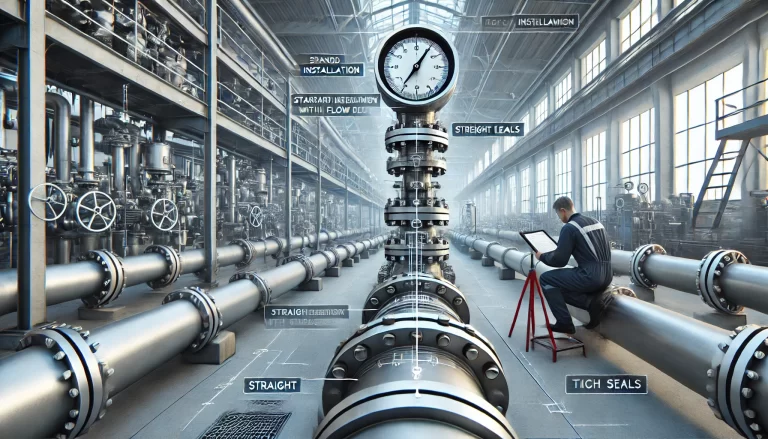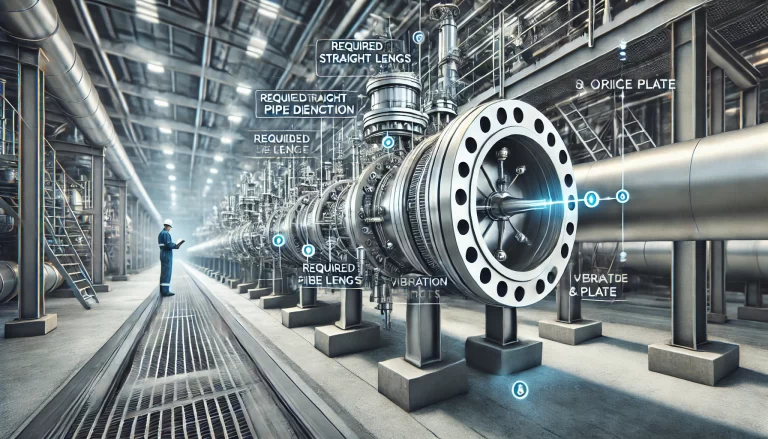A standard throttling device is a widely used instrument for measuring fluid flow in pipelines by creating a pressure drop that is directly related to the flow rate. These devices, such as orifice plates, nozzles, and venturi tubes, are commonly used in industrial settings for flow measurement due to their simplicity, reliability, and ease of installation. However, to ensure the accuracy and longevity of the device, several important factors must be carefully considered during use. Below are the key aspects to keep in mind:
1. Correct Installation of the Device
One of the most critical factors in ensuring accurate measurements is the proper installation of the throttling device. The flow direction must match the direction indicated on the device. Misalignment or incorrect orientation of the device can lead to significant measurement errors or even failure of the device.
Key Points to Consider:
- The inlet and outlet of the device must align with the flow of fluid, as specified by the manufacturer.
- Installation must be performed by trained personnel following the specific guidelines for the particular device type (orifice plate, nozzle, etc.).
- Ensure that there are no sharp bends or sudden changes in the pipe diameter near the device, as these could disturb the flow pattern.

2. Compliance with Straight Pipe Length Requirements
Standard throttling devices require specific lengths of straight pipe both upstream and downstream to stabilize the flow profile before and after it passes through the device. These straight lengths help ensure that the fluid has a fully developed velocity profile when it reaches the measuring device, which is essential for accurate readings.
Recommended Pipe Lengths:
- Upstream (before the device): The pipe should typically be at least 10 times the diameter of the pipe.
- Downstream (after the device): The pipe should typically be at least 5 times the diameter of the pipe.
Failing to meet these requirements can result in turbulence or flow disturbances that compromise the accuracy of the measurement. For installations where space is limited, flow straighteners or additional piping may be required to maintain accuracy.
3. Ensuring Proper Sealing
The integrity of the piping system and the throttling device’s seals are critical for maintaining accuracy. Leaks can introduce measurement errors, as the flow passing through the throttling device may not represent the actual flow rate in the system.
Key Considerations:
- Regularly inspect the gaskets, seals, and flanges for wear or damage.
- Ensure that all connections are properly tightened to avoid leaks.
- Use appropriate sealing materials that can withstand the operating pressure and temperature of the fluid.
4. Monitoring Operating Conditions
The performance of a standard throttling device can be affected by variations in the fluid’s operating conditions, such as temperature, pressure, density, and viscosity. The device should be selected and installed based on the expected range of these parameters to ensure that it operates within its design specifications.
Critical Parameters to Monitor:
- Temperature and Pressure: Significant deviations from the designed temperature or pressure can lead to measurement inaccuracies or even damage to the device.
- Fluid Density and Viscosity: Changes in these properties affect the flow characteristics and may require recalibration of the device.
- Non-Newtonian Fluids: If the fluid has complex properties (e.g., slurries or suspensions), special considerations may be required for the throttling device to function properly.

5. Regular Calibration and Maintenance
Over time, the throttling device may experience wear and tear, leading to measurement inaccuracies. Regular calibration and maintenance are essential to ensure that the device continues to provide accurate readings.
Key Maintenance Steps:
- Periodic Calibration: Calibrate the device at regular intervals based on the manufacturer’s recommendations or industry standards.
- Inspection for Wear: Look for signs of corrosion, erosion, or buildup of deposits, especially if the fluid is abrasive or contains particulates.
- Cleaning: Ensure that the device is clean and free from blockages that could affect the pressure drop and flow readings.
6. Vibration Control
Vibrations in the pipeline can negatively affect the performance of a throttling device. Excessive vibration can cause fluctuations in the pressure readings, which will result in incorrect flow measurements.
Tips for Vibration Control:
- Use pipe supports to stabilize the pipeline near the throttling device.
- Install vibration dampeners or isolators to reduce the impact of mechanical vibrations on the flow measurement.
- Regularly inspect the pipeline for signs of stress or wear caused by vibration.

7. Choosing the Right Fluid Compatibility
The choice of a throttling device must take into account the type of fluid being measured. Different fluids, such as gases, liquids, and steam, require different types of devices to ensure accurate and reliable measurement. Additionally, corrosive or particulate-laden fluids can damage the throttling device if not accounted for during the selection process.
Important Factors for Fluid Compatibility:
- Corrosive Fluids: For fluids with corrosive properties, ensure the device is made from materials that can withstand corrosion (e.g., stainless steel, specialized alloys).
- Particulate Matter: Fluids containing particles or slurries can erode the throttling device or cause blockages. In such cases, a venturi meter or nozzle may be more suitable than an orifice plate.
- High Temperature/Pressure: Ensure the throttling device is rated for the maximum operating temperature and pressure of the system.
8. Preventing Fluid Pulsations
If the flow of the fluid is not steady but rather pulsating, it can cause errors in measurement. This is particularly common in systems with reciprocating pumps. The pulsating flow can create fluctuating pressure readings that are not representative of the actual flow rate.
Solutions for Pulsating Flow:
- Install pulsation dampeners upstream of the throttling device to smooth out the flow before it reaches the measurement point.
- Use average flow calculations over time to account for the pulsations if dampeners cannot be installed.

9. Application-Specific Adjustments
Different industries may have specific requirements for flow measurement. For example, the measurement of natural gas may require additional temperature compensation, while chemical processing may need devices that handle varying fluid compositions. It is important to consider the application and make adjustments to the throttling device setup accordingly.
Example Adjustments:
- Gas Flow Measurement: Correct for changes in gas density due to temperature and pressure variations.
- High-Purity Applications: Ensure that the throttling device is free of contamination and adheres to industry cleanliness standards.
Conclusion
In summary, the accurate operation of a standard throttling device relies on proper installation, maintenance, and monitoring of operating conditions. Ensuring the correct positioning, sealing, and straight pipe lengths, combined with regular calibration and attention to environmental factors, will help maintain the accuracy of flow measurements over time. By addressing these considerations, industries can rely on standard throttling devices for precise and consistent flow measurement in their systems.
